-
 Bitcoin
Bitcoin $84,258.9872
0.35% -
 Ethereum
Ethereum $1,590.5943
1.14% -
 Tether USDt
Tether USDt $0.9998
-0.02% -
 XRP
XRP $2.0990
1.26% -
 BNB
BNB $587.2456
1.30% -
 Solana
Solana $132.5296
6.11% -
 USDC
USDC $0.9999
0.00% -
 TRON
TRON $0.2483
-2.37% -
 Dogecoin
Dogecoin $0.1557
1.96% -
 Cardano
Cardano $0.6199
2.68% -
 UNUS SED LEO
UNUS SED LEO $9.1185
-2.93% -
 Chainlink
Chainlink $12.4572
2.80% -
 Avalanche
Avalanche $19.2046
1.97% -
 Toncoin
Toncoin $2.9568
3.52% -
 Stellar
Stellar $0.2397
2.14% -
 Shiba Inu
Shiba Inu $0.0...01181
1.81% -
 Sui
Sui $2.0961
0.90% -
 Hedera
Hedera $0.1602
2.15% -
 Bitcoin Cash
Bitcoin Cash $330.4313
4.06% -
 Polkadot
Polkadot $3.6278
3.32% -
 Litecoin
Litecoin $74.9638
1.65% -
 Hyperliquid
Hyperliquid $16.4916
8.27% -
 Dai
Dai $0.9999
-0.01% -
 Bitget Token
Bitget Token $4.3499
0.87% -
 Ethena USDe
Ethena USDe $0.9990
-0.03% -
 Pi
Pi $0.6068
-1.04% -
 Monero
Monero $216.4766
0.12% -
 Uniswap
Uniswap $5.1795
0.94% -
 Pepe
Pepe $0.0...07203
1.55% -
 OKB
OKB $50.4898
-2.39%
How does NFT Scalability solve the high cost of NFT transactions?
NFT scalability solutions, like Layer-2 rollups and sidechains, plus improved consensus mechanisms and specialized marketplaces, drastically reduce high transaction costs and boost NFT adoption by increasing throughput and lowering gas fees.
Mar 02, 2025 at 04:49 am
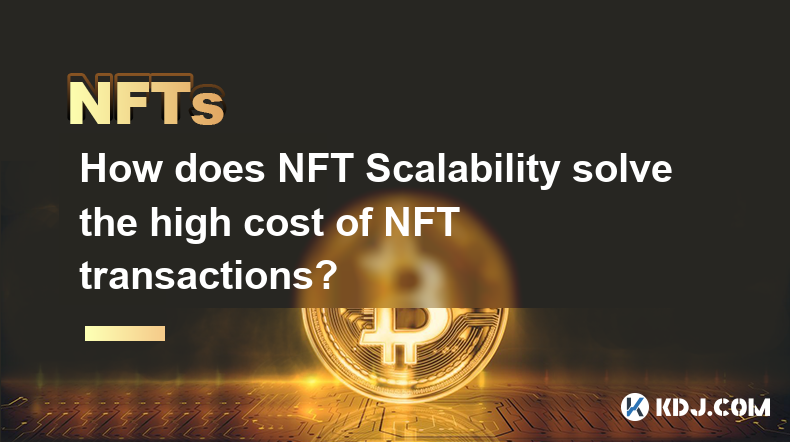
Key Points:
- NFT scalability solutions aim to reduce high transaction costs by increasing transaction throughput and lowering gas fees.
- Layer-2 scaling solutions, such as rollups and sidechains, offer significant improvements in transaction speed and cost.
- New consensus mechanisms and improved network infrastructure play a crucial role in enhancing scalability.
- The development of specialized NFT marketplaces and protocols contributes to lower fees and faster transactions.
- Off-chain solutions and data storage optimizations minimize the burden on the main blockchain network.
How Does NFT Scalability Solve the High Cost of NFT Transactions?
The high cost of NFT transactions, primarily due to network congestion and gas fees on blockchains like Ethereum, has been a significant barrier to wider NFT adoption. Scalability solutions directly address this problem by improving the efficiency and throughput of the blockchain network. This allows for more transactions to be processed simultaneously, thus reducing the individual cost per transaction.
One of the most promising approaches is the use of Layer-2 scaling solutions. These solutions process transactions off the main blockchain, significantly reducing congestion and gas fees. Rollups, for example, bundle multiple transactions into a single transaction on the main chain, drastically decreasing the number of individual transactions needing processing. Sidechains, on the other hand, create separate blockchains that run parallel to the main chain, handling transactions independently before transferring the results back to the main chain.
Beyond Layer-2 solutions, advancements in consensus mechanisms are vital. Proof-of-Stake (PoS) networks generally require less energy and processing power compared to Proof-of-Work (PoW) networks, leading to lower transaction costs. Improvements in network infrastructure, such as enhanced node capacity and optimized data structures, also contribute to increased throughput and lower gas fees.
The emergence of specialized NFT marketplaces and protocols designed for scalability is also crucial. These platforms often utilize optimized transaction processing methods and fee structures, leading to more affordable NFT transactions. Some platforms employ batching mechanisms or utilize different consensus algorithms to achieve higher throughput and lower costs.
Off-chain solutions, such as using decentralized storage networks like IPFS for storing NFT metadata, also help reduce the load on the main blockchain. This approach keeps the actual transaction data on the main chain, but the larger metadata files are stored elsewhere, minimizing blockchain congestion and reducing the transaction size. Data storage optimization techniques, such as efficient data compression and indexing, further improve the efficiency of NFT transactions.
Sharding is another approach that divides the blockchain into smaller, more manageable shards. Each shard processes a subset of transactions, leading to parallel processing and improved scalability. This allows for significantly higher transaction throughput and reduces the burden on individual nodes.
Optimistic Rollups and ZK-Rollups are two prominent types of rollups. Optimistic rollups assume transactions are valid unless proven otherwise, while ZK-Rollups utilize zero-knowledge proofs to verify transactions without revealing the transaction data. Each has its own strengths and weaknesses in terms of security and transaction speed.
The role of Layer-1 improvements: While Layer-2 solutions offer significant improvements, upgrades to the underlying Layer-1 blockchain itself are equally important. Improvements in the blockchain's codebase, data structures, and consensus mechanisms can directly impact transaction speed and cost.
The importance of interoperability: The ability for different blockchains and Layer-2 solutions to communicate and exchange data seamlessly is essential for a truly scalable NFT ecosystem. This will prevent fragmentation and allow for greater efficiency and cost savings.
The impact of improved hardware: Advancements in computing hardware, such as faster processors and increased memory, can significantly enhance the performance of blockchain networks and reduce transaction processing times, ultimately lowering costs.
Common Questions:
Q: What are gas fees, and why are they so high for NFTs?
A: Gas fees are transaction fees paid to miners or validators for processing transactions on a blockchain. High NFT gas fees stem from network congestion, where many transactions compete for processing power, leading to increased demand and higher prices.
Q: How do Layer-2 solutions reduce NFT transaction costs?
A: Layer-2 solutions process transactions off the main blockchain, reducing congestion and therefore lowering gas fees. They bundle transactions or use different consensus mechanisms to increase efficiency.
Q: Are all Layer-2 solutions the same?
A: No, different Layer-2 solutions offer varying levels of security, speed, and scalability. Rollups, sidechains, and plasma chains each have their own trade-offs.
Q: Will NFT transaction costs always be high?
A: No, ongoing development of scalability solutions and blockchain infrastructure is constantly working to reduce transaction costs. As these technologies mature, we can expect costs to decrease significantly.
Q: What is the role of off-chain storage in NFT scalability?
A: Off-chain storage, like IPFS, helps reduce the load on the main blockchain by storing large NFT metadata files off-chain, minimizing transaction size and improving scalability.
Q: What are the potential downsides of Layer-2 solutions?
A: While Layer-2 solutions offer many benefits, potential downsides include complexities in implementation, security considerations, and potential dependence on the mainchain's security.
Q: How do improvements in consensus mechanisms help?
A: More efficient consensus mechanisms, such as Proof-of-Stake, require less computational power than Proof-of-Work, leading to lower energy consumption and lower transaction costs.
Q: What role do specialized NFT marketplaces play?
A: Specialized NFT marketplaces can optimize their platforms for lower transaction fees and faster processing times by using efficient technologies and fee structures.
Q: What is the future of NFT scalability?
A: The future of NFT scalability likely involves a combination of Layer-2 solutions, improved Layer-1 infrastructure, enhanced consensus mechanisms, and more efficient data management techniques. The goal is a more accessible and affordable NFT ecosystem.
Disclaimer:info@kdj.com
The information provided is not trading advice. kdj.com does not assume any responsibility for any investments made based on the information provided in this article. Cryptocurrencies are highly volatile and it is highly recommended that you invest with caution after thorough research!
If you believe that the content used on this website infringes your copyright, please contact us immediately (info@kdj.com) and we will delete it promptly.
- Kaspa (KAS) Price Prediction Hints at Accumulation Before Potential Surge
- 2025-04-17 22:15:13
- FET Price Prediction: Artificial Superintelligence Alliance (FET) Cryptocurrency Rebounds 10%
- 2025-04-17 22:15:13
- U.S. President Donald Trump Slammed Fed Chair Jerome Powell
- 2025-04-17 22:15:12
- Running a laundromat can't be as "easy" as potential investors may believe it is
- 2025-04-17 22:15:12
- BlockDAG (BDAG) Presale Explosion and Mobile Mining Powerhouse
- 2025-04-17 22:05:12
- Solana (SOL) Price Prediction: Eyes on $180 as Structure Turns Bullish
- 2025-04-17 22:05:12
Related knowledge
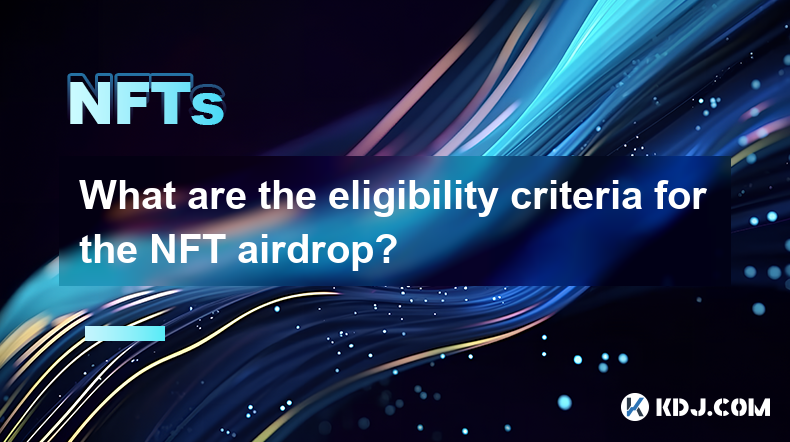
What are the eligibility criteria for the NFT airdrop?
Apr 17,2025 at 04:56pm
Understanding NFT AirdropsNFT airdrops are a popular method used by blockchain projects to distribute non-fungible tokens (NFTs) to their community members. These airdrops can serve various purposes, such as rewarding loyal users, promoting new projects, or increasing the visibility of existing ones. To participate in an NFT airdrop, individuals must me...

How to combine traditional artworks with NFTs?
Apr 17,2025 at 12:35am
The integration of traditional artworks with Non-Fungible Tokens (NFTs) represents a fascinating intersection of art and technology, offering artists and collectors new ways to engage with and monetize art. This article will explore how traditional artworks can be combined with NFTs, providing a detailed guide on the process, benefits, and consideration...
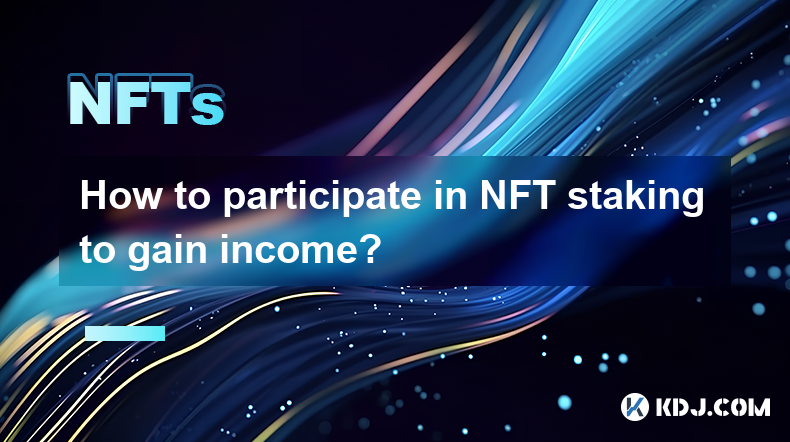
How to participate in NFT staking to gain income?
Apr 17,2025 at 06:14pm
Participating in NFT staking to generate income has become an increasingly popular method within the cryptocurrency community. NFT staking involves locking up your Non-Fungible Tokens in a smart contract to earn rewards, typically in the form of additional tokens or other benefits. This guide will walk you through the process of participating in NFT sta...

How to make music or video files into NFTs?
Apr 16,2025 at 10:29pm
Creating music or video files into Non-Fungible Tokens (NFTs) has become an increasingly popular way for artists and creators to monetize their work directly. This process involves converting your digital content into a unique token on a blockchain, which can then be bought, sold, or traded. Here’s a detailed guide on how to transform your music or vide...
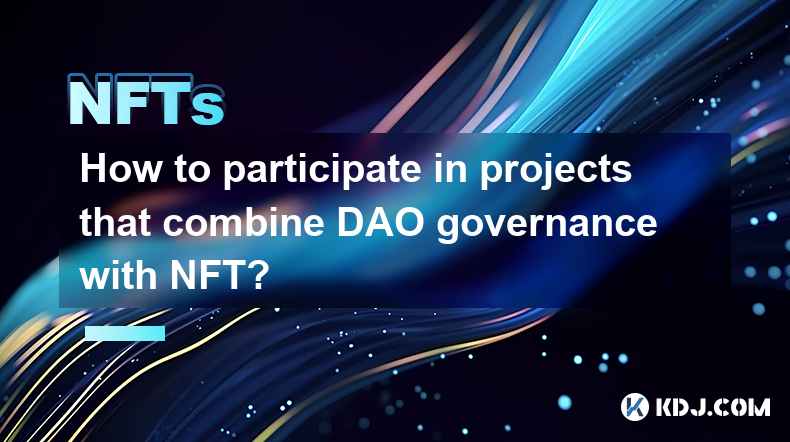
How to participate in projects that combine DAO governance with NFT?
Apr 17,2025 at 10:14am
Participating in projects that combine DAO governance with NFTs offers a unique opportunity to engage with decentralized communities and digital assets. These projects often involve voting on project decisions and owning unique digital tokens that can represent membership, access, or other benefits. Here's a detailed guide on how to participate in such ...
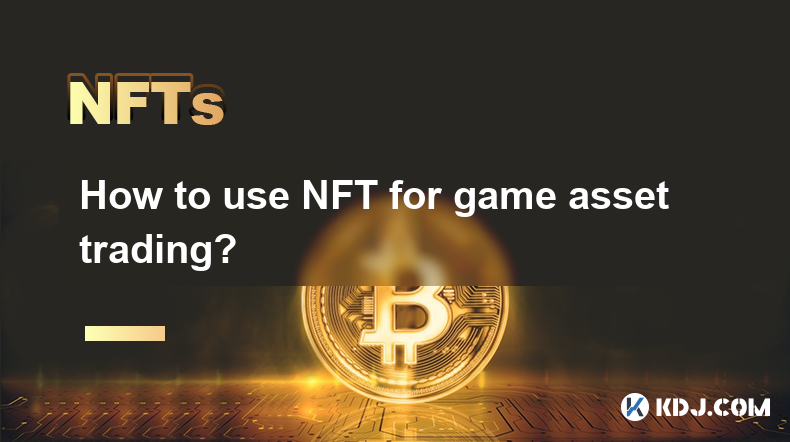
How to use NFT for game asset trading?
Apr 17,2025 at 12:21pm
Using Non-Fungible Tokens (NFTs) for game asset trading has become an increasingly popular method for gamers and developers alike to buy, sell, and trade unique in-game items. NFTs provide a way to prove ownership and authenticity of digital assets, making them perfect for trading game items that have unique characteristics and value. In this article, w...

What are the eligibility criteria for the NFT airdrop?
Apr 17,2025 at 04:56pm
Understanding NFT AirdropsNFT airdrops are a popular method used by blockchain projects to distribute non-fungible tokens (NFTs) to their community members. These airdrops can serve various purposes, such as rewarding loyal users, promoting new projects, or increasing the visibility of existing ones. To participate in an NFT airdrop, individuals must me...

How to combine traditional artworks with NFTs?
Apr 17,2025 at 12:35am
The integration of traditional artworks with Non-Fungible Tokens (NFTs) represents a fascinating intersection of art and technology, offering artists and collectors new ways to engage with and monetize art. This article will explore how traditional artworks can be combined with NFTs, providing a detailed guide on the process, benefits, and consideration...

How to participate in NFT staking to gain income?
Apr 17,2025 at 06:14pm
Participating in NFT staking to generate income has become an increasingly popular method within the cryptocurrency community. NFT staking involves locking up your Non-Fungible Tokens in a smart contract to earn rewards, typically in the form of additional tokens or other benefits. This guide will walk you through the process of participating in NFT sta...

How to make music or video files into NFTs?
Apr 16,2025 at 10:29pm
Creating music or video files into Non-Fungible Tokens (NFTs) has become an increasingly popular way for artists and creators to monetize their work directly. This process involves converting your digital content into a unique token on a blockchain, which can then be bought, sold, or traded. Here’s a detailed guide on how to transform your music or vide...

How to participate in projects that combine DAO governance with NFT?
Apr 17,2025 at 10:14am
Participating in projects that combine DAO governance with NFTs offers a unique opportunity to engage with decentralized communities and digital assets. These projects often involve voting on project decisions and owning unique digital tokens that can represent membership, access, or other benefits. Here's a detailed guide on how to participate in such ...

How to use NFT for game asset trading?
Apr 17,2025 at 12:21pm
Using Non-Fungible Tokens (NFTs) for game asset trading has become an increasingly popular method for gamers and developers alike to buy, sell, and trade unique in-game items. NFTs provide a way to prove ownership and authenticity of digital assets, making them perfect for trading game items that have unique characteristics and value. In this article, w...
See all articles























































































